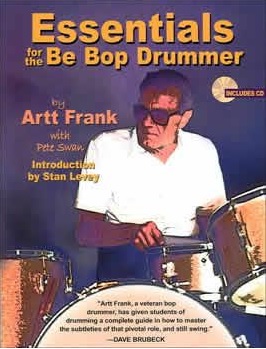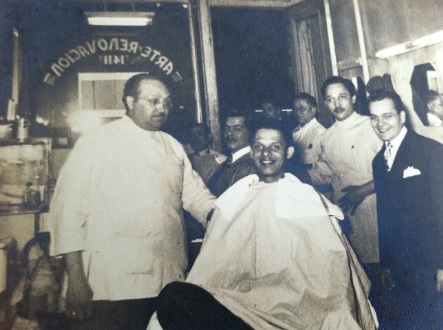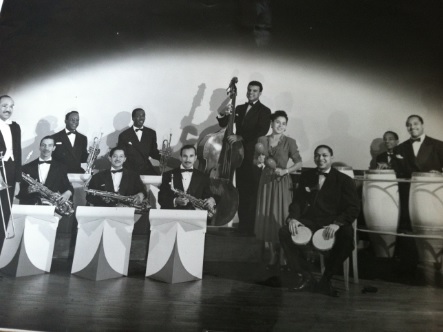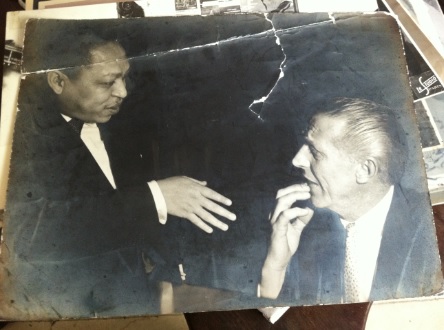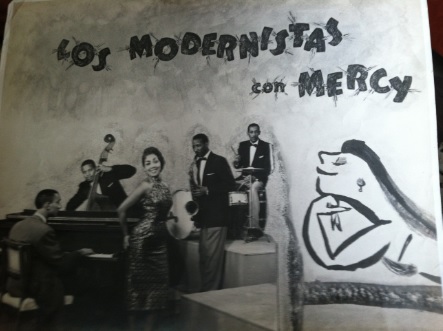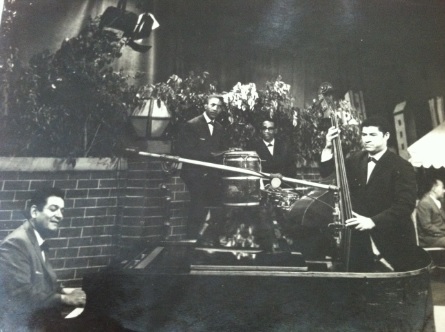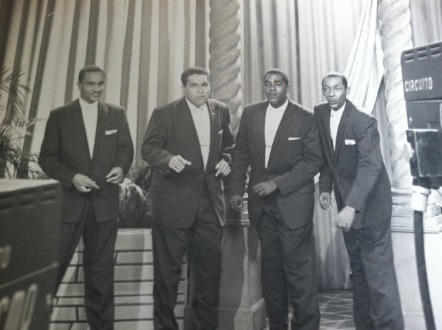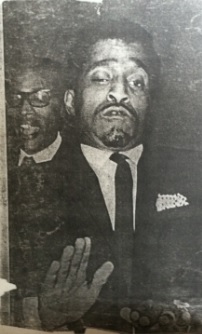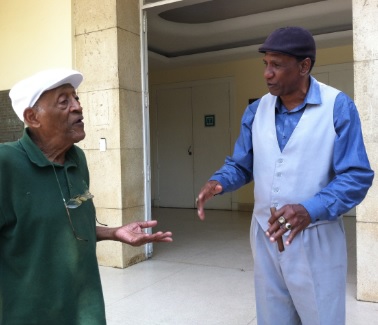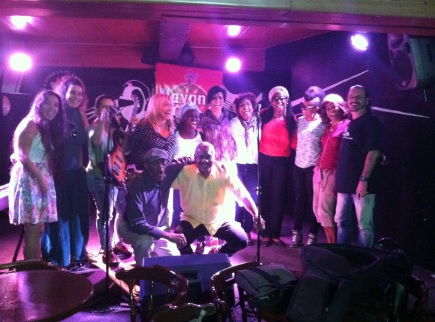Artist-Educators, Blog, Jazz on the Tube Interview

Interview
Download the mp3
Musician, bandleader, music director, club owner, and educator, Ed Polcer has played with the greats, hosted the greats at his club Eddie Condon’s in New York City, programmed great jazz parties around the country, and now in addition to playing is enjoying introducing the next generation to the beautiful art of jazz.
More information go to the Ed Polcer website
– Ken McCarthy
Jazz on the Tube
P.S. Our unique programming is made possible by help from people like you. Learn how you can contribute to our efforts here: Support Jazz on the Tube
Thanks.
Artist-Educators, Blog, Jazz on the Tube Interview

Interview
Download the mp3
Paul Steinbeck, a musician and educator, (Assistant Professor of Music Theory at Washington University in St. Louis), covers one of the most intriguing bands in the history of American music.
Founded in Chicago in the “tumultuous” 60s, The Art Ensemble of Chicago carved out a space for itself in the notoriously conservative music industry that not only allowed its members full creative freedom, but also paved the way for countless other creative musicians and artists.
How did this group which accepted no limitations or labels survive and thrive in a world that demands musicians put themselves in a box?
The answer is in the pages of this book.
Roscoe Mitchell, one of the members of the group, had this to say about it:
“This book is more than we could have hoped for, telling the complete history of the Art Ensemble of Chicago in careful, engaging detail.”
For more information about the book:
www.press.uchicago.edu/ucp/books/book/chicago/M/bo25125876.html
More information about Paul:
www.paulsteinbeck.com
How to support the book:
1. Get it
2. Review it
3. Let your college’s librarian know about it
– Ken McCarthy
Jazz on the Tube
P.S. Our unique programming is made possible by help from people like you. Learn how you can contribute to our efforts here: Support Jazz on the Tube
Thanks.
Artist-Educators, Blog, Jazz on the Tube Interview
Interview
Download the mp3 here
About Artt Frank:
Drummer Artt Frank was born on March 9, 1933 in Westbrook, Maine.
Frank has been a professional drummer since he was a teenager.
His most significant musical association was with Chet Baker who he met when the trumpeter was struggling in the mid-1960s, playing with him off and on for 20 years.
Frank has also performed with Billie Holiday, Sonny Stitt, Jimmy Heath, Ted Curson and Al Cohn among others and has led several albums of his own.
His book Chet Baker: The Missing Years, A Memoir was published in 2014.
Artt Frank talks about his friend Chet Baker in this interesting interview.
-Scott Yanow
“My whole philosophy of music is to build a spiritual unity in sound. If an audience becomes a part of that unity, if only for a few minutes, then I have accomplished what I have set out to do.
This is my way of sharing with others all the wonderful gifts that GOD has bestowed upon me. In my compositions, this unity is expressed through lyricism.
A melody that can be understood, felt and shared is a very powerful thing as is the sharing that we show in love for one another – a spiritual unity coming down from, and ascending up to the FATHER of LIGHTS who gives it continuously when you ask.”
– Artt Frank
Chet Baker – Tune Up
Chet Baker, trumpet
Drew Salperto, piano
Mike Formanek, bass
Artt Frank, drums
The Artt Frank Group – Tribute to Chet Baker
Artt Frank, drums
Dave Liebman, soprano sax
Billy Dowling, trumpet
Phil Markowitz, piano
Dennis Irwin, bass
Artt Frank demonstrates melodic Bebop Drumming

Earla Porch – Easy Street
Earla Porch, vocals
Joe McWilliams, piano
Ken Berry, tenor sax
John Mobillo, bass
Kathy Frank, drums
– Ken McCarthy
Jazz on the Tube
P.S. Our unique programming is made possible by help from people like you. Learn how you can contribute to our efforts here: Support Jazz on the Tube
Thanks.
Artist-Educators, Blog, Cuba, Cuban Jazz, Latin Jazz, The Cuba-US connection, Travel to Cuba
Gilberto Valdés is eight-eight years old this year. We had the wonderful opportunity to meet him and spend some time talking jazz.
Jazz drummer, singer, band leader, producer and educator. Gilberto’s life tells the story of post-war jazz in the United States and Cuba and bridges Cuba’s pre and post-Revolution jazz history.
Havana-born, as a five year old he was introduced to American jazz by his young uncle, Raul Zequeira, who was just nine years older than him. During his childhood Gilberto accompanied his uncle to many parties and social gatherings where American jazz and pop music was au courant.
Later as a young man, Gilberto made frequent trips to New York City where he stayed with his step-father, Humberto Gelabert, a former sideman with Benny Carter and the bandleader of his own Cuban orchestra. Humberto also owned a popular barbershop in East Harlem.
During these trips, Gilberto went to the Savoy Ballroom, Minton’s (where he sat in one night), Birdland, and the Palladium Ballroom.
What he learned, he brought back home and among other things helped pioneer bebop on the island.
In 1957, while his vocal quartet “The Cavaliers” was performing at San Souci, the preeminent nightclub in Havana, he met Roy Haynes who at the time was the drummer in Sarah Vaugh’s Trio. Haynes gave Gilberto a set of drum sticks as an encouragement to take up the drums, which he did.
He spent the first half of the sixties in Europe where he reconnected with his Uncle Raul who had moved to Paris after World War II and had his own band.
When Gilberto returned to Cuba he became the country’s jazz ambassador hosting Dizzy Gillespie’s historic 1977 visit, bringing the Cuban super group Irakere to the U.S. and representing Cuban jazz musicians internationally.
As the last picture in this series shows, he’s a beloved figure in Havana’s jazz scene where he’s been an educator and mentor to countless young jazz musicians.
Along with pianist and bandleader Bellita, he played a key role in saving Cuba’s most important jazz club El Zorra y La Cuarva from being turned into a pizzeria!
Photos
 Gilberto’s step-father Humberto Gelabert (on the left) was
Gilberto’s step-father Humberto Gelabert (on the left) was
proprietor of a barbershop in East Harlem Gilberto’s step-father and his Cuban jazz orchestra
Gilberto’s step-father and his Cuban jazz orchestra
He’s on the far left with a trombone Gilberto’s step-father talking with Stan Kenton
Gilberto’s step-father talking with Stan Kenton Gilberto’s band brought modern North American jazz to Cuba.
Gilberto’s band brought modern North American jazz to Cuba.
That’s Gilberto on drums on the upper right Gilberto started as a professional singer in high school specializing in Harmonical Vocal Quartet music and continued with singing groups his entire career. Gilberto is on the far right.
Gilberto started as a professional singer in high school specializing in Harmonical Vocal Quartet music and continued with singing groups his entire career. Gilberto is on the far right. Gilberto on drum kit
Gilberto on drum kit A television pioneer in Cuba. Gilberto on the far right
A television pioneer in Cuba. Gilberto on the far right A publicity shot from the White Elephant in Paris in the 1960s.
A publicity shot from the White Elephant in Paris in the 1960s.
Gilberto on timbales Gilberto on drums with Bebe Valdés in Sweden in the 1960s
Gilberto on drums with Bebe Valdés in Sweden in the 1960s Sammy Davis Jr. on congas and Gilberto on timbales
Sammy Davis Jr. on congas and Gilberto on timbales Gilberto (with tie) brought Irakere to New York City and the world.
Gilberto (with tie) brought Irakere to New York City and the world.
Chucho Valdés on the left. The President of CBS’s Record Division Bruce Lundwald on the upper right. Conga player Oscar Valdés (no relation) on the lower right In front of Casa de la Cultura de Plaza, the birthplace of the Havana Jazz Festival, Gilberto with youngest son of Jorge Varona, who played with Irakere during Irakere’s visit to US
In front of Casa de la Cultura de Plaza, the birthplace of the Havana Jazz Festival, Gilberto with youngest son of Jorge Varona, who played with Irakere during Irakere’s visit to US Gilberto with special friends – March 2017.
Gilberto with special friends – March 2017.
Up front, to the left of the man in yellow, Waldo Nelson Cárdenas
of the Havana jazz club El Zorra y La CuervaTo find out who these special friends are, click here.
– Ken McCarthy
Jazz on the Tube
P.S. Our unique programming is made possible by help from people like you. Learn how you can contribute to our efforts here: Support Jazz on the Tube
Thanks.
Artist-Educators, Blog, Cuba, Jazz on the Tube Interview, Podcasts, The Cuba-US connection, Travel to Cuba

Interview
Download the mp3 here
For further study:
M-Base.com
More information about Steve Coleman is available at M-Base.com including a detailed biography, upcoming gigs and projects, music (which you can download for free), scores, essays and interviews.
Steve’s essay on Charlie Parker is must reading.
M-Base.net
You can register here for free at m-base.net and watch the trailer for the film “Elements of One” that Steve and I talked about.
The complete film is also available for online streaming from the site for $18.00 and is well worth it.
Mongo Mangue, the piece Steve and I discussed in the interview that features Charlie Parker playing with Machito and his Afro-Cubans
– Ken McCarthy
Jazz on the Tube
P.S. Our unique programming is made possible by help from people like you. Learn how you can contribute to our efforts here: Support Jazz on the Tube
Thanks.
Afro-Cuban culture, Artist-Educators, Blog, Jazz on the Tube Interview, Latin Jazz, Podcasts, Puerto Rico, The Cuba-US connection, Video and audio

Interview
Download the mp3 here
I say our beloved Bronx because the Bronx is a cultural treasure that all Americans can be proud of.
In this wide-ranging and fascinating conversation, Bobby Sanabria talks about the state of jazz education, the historic and ongoing contribution to jazz by Latin music and musicians, and the history of the Bronx, one of the most important centers of musical innovation in the modern world.
“The soul of the people of the Bronx is one of resilience, resistance, and pride,” Mr. Sanabria said. “It really is a majestic history.” (New York Times)
Additional references:
The official Bobby Sanabria Web Site
BMHC just broke ground last month, on January 13th, on what will be a 300-seat theater as part of a massive housing complex of over 300 apartments on E. 162nd St. and Elton Ave in the Melrose section of the South Bronx. It will open in December of 2018. This will be the permanent home of the Bronx Music Heritage Center.
From Mambo to Hip Hop
Before the Fires: An Oral History of African American Life in the Bronx from the 1930s to the 1960s by Mark Naison and Bob Gumbs Info about the book “Before the Fires”
The Clave – The Key: Africa, the Caribbean and New Orleans
What New York City sounded like when Bobby was 15. The Puerto Rican community gathers at at the Bandshell in Central Park.
– Ken McCarthy
Jazz on the Tube



